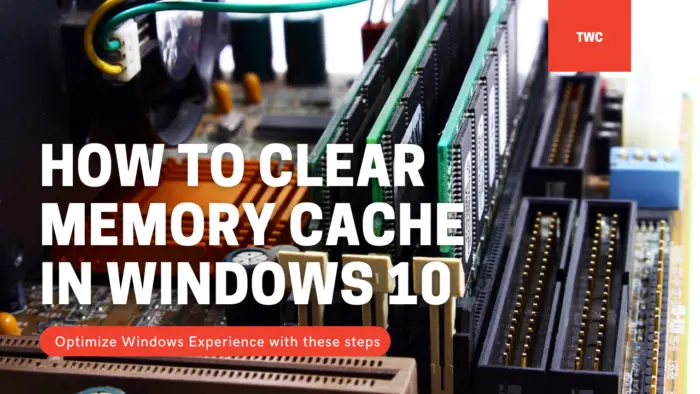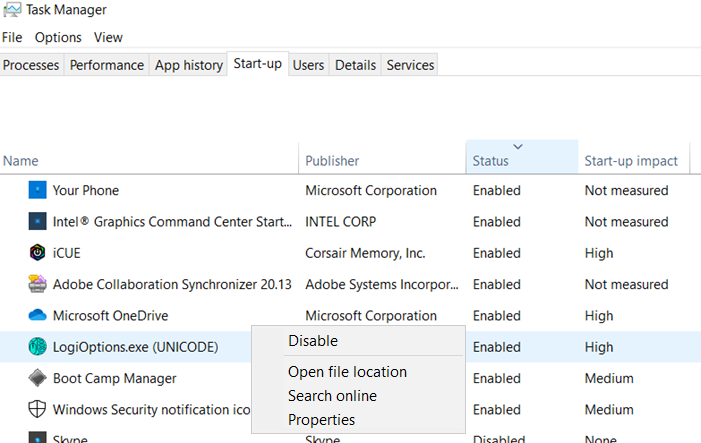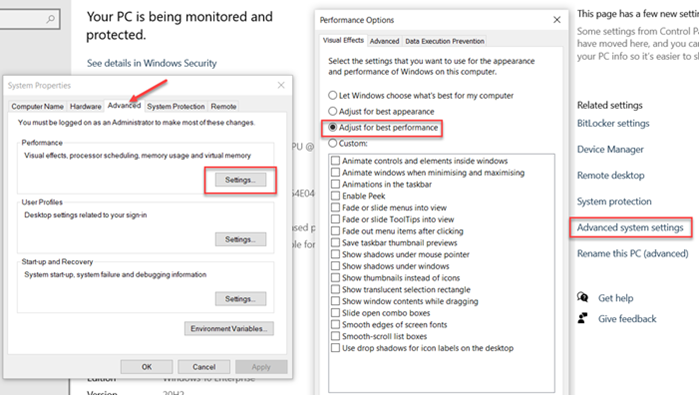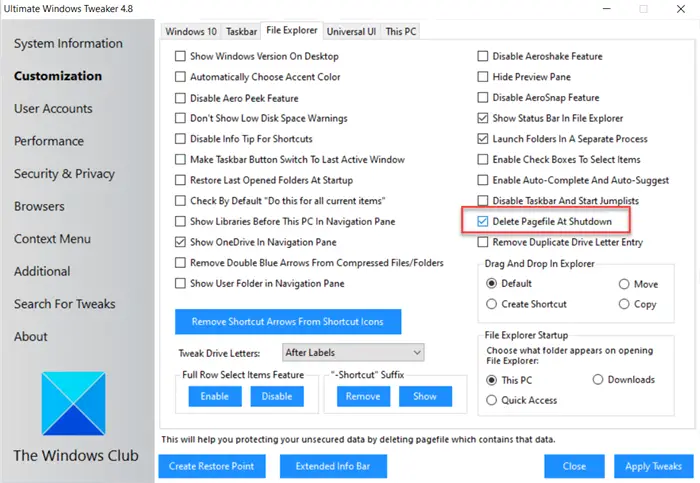Running out of memory is not a big deal unless you are running a high-end configuration. The more apps you have, the more memory will be occupied. Closing apps may help, but at times, the memory may remain occupied, and that’s why it may be necessary for some to clear out old memory and free the RAM. This post will guide you on how to clear the Memory Cache in Windows 11/10.
How to reset RAM on Windows PC

How to clear Memory Cache in Windows 11/10
Follow these suggestions to clear the memory cache in Windows 11/10 to free up RAM on the computer.
- Restarting the PC is the best way.
- Close unwanted programs and processes from the Task Manager
- Reduce Startup items
- Reduce Windows Visual Effects
- Periodically clear Page File at Shutdown
- Add more RAM if you feel the shortage.
You will need admin permission to resolve the problem.
1] Restarting the PC is the best way
Most problems are resolved if you choose to restart. When the computer restarts, it removes everything from memory and starts fresh. So, if memory is still occupied even after the program exits, restart. It will make sure to remove it.
2] Close unwanted programs and processes from the Task Manager
If you need to keep running applications because you may need them again and forget about it, it will be a problem in a couple of hours. Check on the taskbar and system tray for such programs and close it.
While you may have closed the program, it could run in the background. In that case, open Task Manager using Ctrl + Shift + Esc. Sort the programs based on memory. If you see a program occupying a lot of memory and you won’t lose any work, right-click on it and choose to Kill the task.
TIP: Some people recommend running the Rundll32.exe advapi32.dll,ProcessIdleTasks command to force any pending idle tasks to be executed immediately, without waiting a lengthy period. It does not help! This command puts Windows into an idle state, enabling it to perform tasks that it wouldn’t otherwise normally do while the PC is in use; i.,e. in short, it forces idle tasks to be executed and has nothing to do with clearing memory and making the PC run faster.
Read: How to Free up, Reduce or Limit RAM usage in Windows 11
3] Reduce Startup items

If restarting the computer doesn’t help and it takes time for you to start using it, it’s because of the Startup Programs. As you install software and applications, they register to start as Windows boots and reserve memory. If you have too many, you will always remain low on memory.
Open Task Manager using Ctrl + Shift + Esc, and switch to the Startup tab. As soon as you log in to the computer, right-click on the programs you do not need and disable them.
4] Reduce Windows Visual Effects
Visual Effects always take up RAM, and while you may not live without it, you can disable it. The easiest way is to use the Ultimate Windows Tweaker, which allows you to enable or disable in one click, but here is the longer version:

- Open System settings by using Win + X, and then select System
- Locate and click on the Advanced system settings link on the right panel
- Switch to the Performance tab in the System Properties window
- Choose Adjust for best performance.
Read: How to clear Computer Cache in Windows.
5] Periodically clear Page File at Shutdown
Page File is a built-in system in Windows where part of storage is used as RAM. It is beneficial as the OS gets extra temporary space to hold things that would have to drop.
Since it is a physical file, it remains on the computer even after a shutdown. While Windows recommends letting the OS manage it, you can choose to clear the Page File with every shutdown.

You can do it manually, but we highly recommend you use the Ultimate Windows Tweaker to get it done smoothly and with few clicks. It’s our in-house software with comes with exhaustive features to tweak Windows. You will see the setting under Customization > File Explorer.
TIP: Memory Optimizers don’t really work. They move computer memory data into the virtual memory or Page File and thus trick users into believing that they freed up computer memory.
6] Add more RAM if you feel the shortage
If nothing else is working, you need more RAM. In the current scenario, you need at least 16 GB of RAM as applications are heavy, and it’s crucial if you need to run more apps simultaneously. Upgrade RAM based on the current module you have on your computer or choose a different one by checking the motherboard’s supported versions. If RAM’s speed is less than the maximum supported, you can choose to replace the entire set of RAM with a better version.
You might also want to read our post on the busted myths about Windows Tweaks. Here, we have discussed features like how software like Registry cleaners and Lunk file cleaners don’t really help improve performance. We have also shared how using better hardware like SSD and faster RAM can help.
How do I clear my RAM on Windows 11?
Windows is smart enough to clear the RAM when needed, so you need not do it manually. But if you do wish to clear RAM on Windows 11, the best way to do it is to fully shut down your PC, wait for half a minute, and then restart your computer.
How to reset RAM without restarting computer?
To reset RAM without restarting computer, try this:
- Open Notepad
- Enter the following command:
FreeMem = Space(100000000). In this example, you will release 100MB of RAM. - Save this file with the .vbs format.
- Open again Notepad
- Enter the following command:
- Mystring = (80000000)
- Save this file with the .vbs format.
- Double-click each of the two VBS files.
That’s it.
Leave a Reply